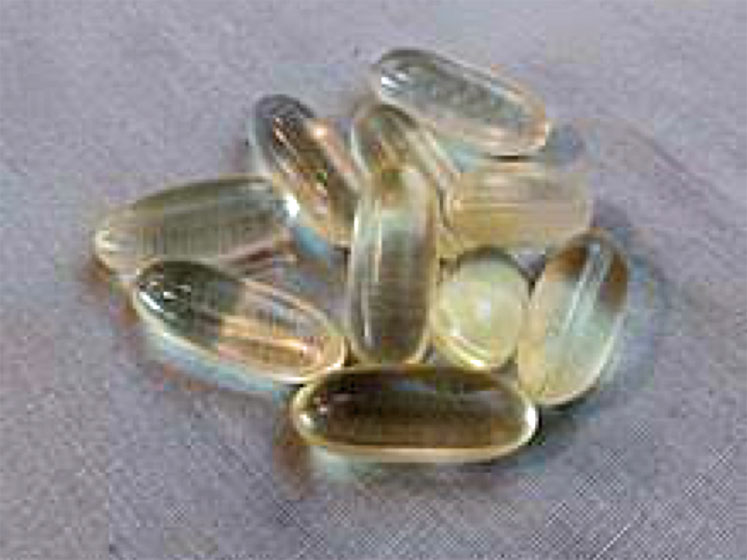Microalgae are abundantly present in the world’s oceans and, by capitalising on their photosynthetic abilities, can be easily grown in open cultivation systems or using photobioreactors.
Considering the vast variety of microalgae species available, only a select few have witnessed any commercial success. Although more than 30 microalgae are currently under research, their benefits are yet to be fully explored and utilised in industrial applications (Figure 1).

Leading the field, though, the food and dietary supplement space has made significant progress in terms of extracting and assessing ingredients from biologically derived microalgae that are essential for human health.
Microalgae are widely considered to be both a food and a dietary supplement. They are one of the most explored sources of natural ingredients such as proteins, carbohydrates, lipids, polysaccharides, polyunsaturated fatty acids (PUFAs), vitamins, minerals and various other bioactive compounds.
Many of which have gained popularity owing to their positive health properties (antihypertensive, anti-obesity, antioxidative, anticancer and cardiovascular protection, to name a few).
A number of these nutritious ingredients are not produced by the human body; they are quite important for the development of the brain and overall cognitive health but have yet to be recognised as functional foods or nutraceuticals.
Bioactive compounds: the core of microalgae-based supplements
Omega-3 (DHA and EPA) supplements that reduce the risk of cardiovascular disease and protect against obesity and diabetes are currently in high demand.
Although fish and krill oil are popular sources of omega-3 supplements, they pose a significant threat to aquatic life, have low oxidative stability and have a prominent off-flavour profile.
Plant-based sources, such as flaxseed and linseed, are used to supplement omega-3 requirements because they provide ALA, which is then converted to DHA and EPA. However, it is unknown how much ALA is actually converted to long-chain omega-3 fatty acids.
This has shifted the industry’s focus to microalgae with higher concentrations of DHA and EPA, such as Schizochytrium sp., Tetraselmis chuii, Euglena gracilis and Nannochloropsis sp.

These microalgae-extracted omega-3s have no side-effects and are the most sustainable option for vegan consumers who are concerned about their foods’ nutritional value. Schizochytrium is currently commercially used to extract omega-3s, whereas Tetraselmis chuii lacks regulatory compliance … and omega-3 fatty acids are not specifically extracted from E. gracilis.
Microalgae-derived omega-3s are expected to penetrate the market with exponential growth in the coming years as technological advancements introduce the market to new microalgae sources with improved extraction technologies.
Other essential fatty acids, such as omega-6, are abundant in Chlorella species such as C. vulgaris and C. pyrenoidosa, which have a high level of PUFAs (comparable with that found in fish oils).
They are also known as “Supreme Whole Food Concentrates” because they contain a significant amount of chlorophyll. Although omega-3s are found in these microalgae, commercial extraction has not been feasible as of now.
Spirulina, derived from Arthrospira platensis, has made its presence known as a dietary supplement because the ingredient contains a variety of nutrients — such as vitamins and minerals — which are necessary for good health.
It also promotes the production of white blood cells and antibodies, which fight viruses and bacteria in the human body. The graph seems to be on the rise for spirulina as demand seems to be increasing exponentially.
Traditional sources of astaxanthin, an excellent antioxidant, include yeast, salmon, krill and shrimp; however, natural astaxanthin produced by Haematococcus pluvialis has a significantly higher antioxidant capacity than synthetic astaxanthin.
Beta carotene is now widely produced from Dunaliella salina and its consumption would meet current vitamin A requirements.
Hidden microalgae gems
With sustainability concerns on the rise, intense research and development activities are taking place around the world to identify possible microalgae-derived nutritional supplements.
Many species, including Euglena gracilis, Porphyridium cruentum, T. chuii, and Phaeodactylum tricornutum have untapped potential as nutritional supplement sources. Except for E. gracilis, the nutrients derived from most of these microalgae have not been approved by regulatory bodies.

E. gracilis has only been on the market for 4–5 years and does not have a significant market share. Yet, it contains numerous nutrients, including the polysaccharide paramylon beta-1,3-glucan, which is as unique as E. gracilis and is recognised as an immune cell receptor.
However, it is not digestible like dietary fibre and has a porous structure inside, allowing it to absorb excess substances in the human body. As a result, it has excellent antioxidant, antivirus and free radical scavenging properties.
Phycoerythrin, a potential natural pigment extracted from P. cruentum, could be used as a colouring agent in the food industry. It also contains high levels of lipids and PUFAs, but its exact nutritional value is still being researched.
Similarly, other species such as Odentella aurita, Thalassiosira weissflogii, Isochrysis galbana, Chromochloris zofingiensis and many others are being investigated as potential commercial sources of niche nutritional supplements.
Ingredients of interest include carotenoids, astaxanthin and fucoxanthin, among others, in addition to the standard omega fatty acids and chlorophylls that can be extracted.
Conclusion
Microalgae are a promising long-term source of nutritional ingredients because of their ability to provide a wide range of essential nutrients. Furthermore, microalgae derivatives have been used as food supplements for more than a century.
However, their nutritional identity has only flourished in the market in the last two decades after being approved by food regulatory bodies such as the US FDA (GRAS) and the EU EFSA.
Microalgae are not yet part of the functional food industry owing to restrictions imposed by relevant regulatory bodies. However, these microalgae have enormous potential that has been limited by safety concerns regarding human consumption.
With more intensive research on making safer and more sustainable nutritional ingredients from microalgae, it is only a matter of time before they make their way into the mainstream nutritional ingredient space.




